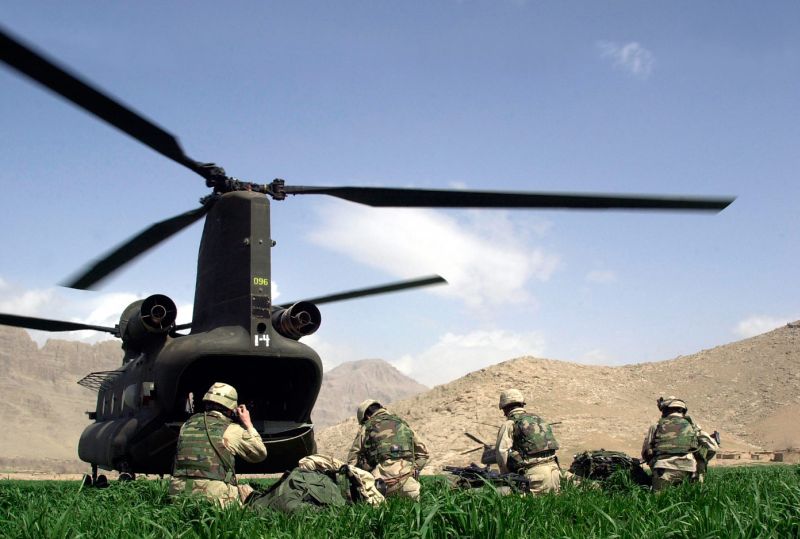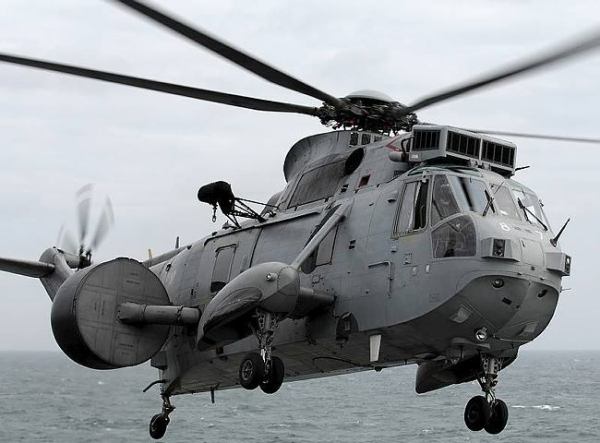An insurgent-fired rocket-propelled grenade was the primary cause of an Aug. 6 CH-47 helicopter crash in Afghanistan that killed 38 U.S. and Afghan forces, a U.S. Central Command investigation confirmed.
Centcom officials released the results of the investigation yesterday.
The investigation confirmed that the RPG, fired by a Taliban fighter, struck the helicopter’s aft rotor blade as it approached its combat landing zone in Wardak province.
The grenade exploded on contact, causing the chopper to spin violently as its aft, then forward rotor blade systems ripped from the fuselage. The aircraft crashed into a dry creek bed, then burst into flames. Onboard fuel and munitions sparked multiple secondary explosions.
The incident was the deadliest in the decade-long war in Afghanistan. In addition to the aircrew, 17 Navy SEALs, five naval special operations support personnel, three Air Force special tactics airmen, seven Afghan soldiers and an interpreter were killed. A military working dog also died.
Investigators inspected the aircraft wreckage, reviewed volumes of relevant documents and several hours of aircraft full-motion video and conducted more than 60 interviews, some with eyewitnesses, during their investigation, according to Army Brig. Gen. Jeffrey N. Colt, who led the team.
Based on this review, Colt said they found no wrongdoing by U.S. or Afghan forces, and concluded that the mission was planned and executed appropriately.
“I have determined that this mission, and the tactics and resources employed in its execution, were consistent with previous U.S. special operations missions, and the strike forces selected to execute the mission were appropriate,” Colt reported.
Investigators concluded that the decision to load the entire immediate response force onto one helicopter to minimize exposure to ground fire and mass the assault force was “tactically sound.” They also determined that the helicopter crew members involved were “fully qualified” to conduct the mission.
The mission was launched the night of Aug. 5 to capture or kill Qari Tahir, an Afghan who had assumed the role of senior Taliban leader in Wardak province’s Tangi Valley, the investigation report revealed. Tahir was believed to have ties to senior Taliban leaders in Pakistan, including the Taliban’s shadow governor of Wardak.
The special operations task force manager, operating at a forward operating base in nearby Logar province, ordered one of his assault forces, built around a U.S. Army Ranger platoon, to conduct the mission. He also included an Afghan partnering unit, the report notes.
Another assault force, built around a Navy SEALs troop, was identified as the immediate reaction force, if needed.
Two CH-47D Chinook helicopters, two AH-64 Apache attack helicopters, an AC-130 gunship and “a relatively robust team of intelligence, surveillance and reconnaissance aircraft” supported the mission, the report said.
The plan was for the two CH-47 helicopters to airlift the assault force to a landing zone near the compound where Tahir was believed to be. The assault force then would move in to surround the compound, clear and secure it, question detainees and collect items of intelligence value.
While the mission was under way, overhead aircraft continued to track two armed enemy personnel who fled the site and joined several more suspected Taliban fighters. Tahir was believed to be among the group.
Based on the tactical situation, the special operations task force commander and immediate reaction force commander deployed the 17-man Navy SEAL immediate response force. To increase its capabilities, they added an Afghan partnering unit and additional assault support elements.
This increased the force to 32 members, with all loaded onto a single CH-47D.
“An informed tactical decision was made to load all personnel on one aircraft because the [immediate reaction force] commander wanted to mass troops quickly, and to mitigate the increased risk of a second helicopter approaching the landing zone,” the report says.
As the helicopter began descending to approach the landing zone and slowed to about 58 mph, a previously undetected group of suspected Taliban fighters began to attack, the report said. They fired two or three RPGs in rapid succession from the tower of a two-story, mud-brick building about 220 meters south of the aircraft, the report says.
Although the first RPG missed, the second struck one of the aft rotor blades and exploded. Within about five seconds, the aircraft dropped from the sky and crashed into a dry creek bed, where it burst into flames. Fuel and munitions caused multiple secondary explosions before the aircraft burned out several hours later, the report says.
The Ranger-led assault team rushed in by foot to search for survivors as overhead aircraft stood by to keep enemy fighters away from the crash site. A 20-man rescue and recovery unit quickly arrived to help secure the site and recover remains.
Within eight hours of the crash, they accounted for all 38 remains, as well as the military working dog. They were transported by ground convoy to Combat Outpost Sayyid Abad.
Meanwhile, efforts to recover the helicopter were disrupted by a flash flood that swept through the creek bed, washing parts of the wreckage up to 200 meters downstream, the report says. By Aug. 9, U.S. forces finished moving the aircraft from the site.
Colt extended condolences to those who lost comrades and loved ones in the crash. “For the families, friends and fellow warriors of the fallen, American and Afghan, the loss of these selfless and courageous men was a tragedy for which this report can provide little comfort,” he wrote. “I offer my deepest condolences, personally and on behalf of my investigative team, to all of those who mourn the loss of these brave men.”











